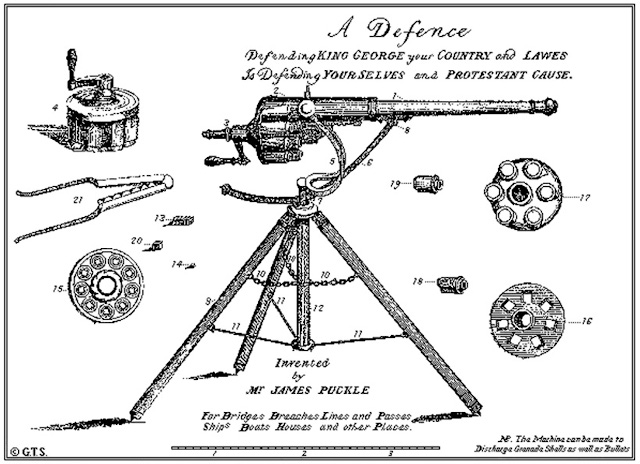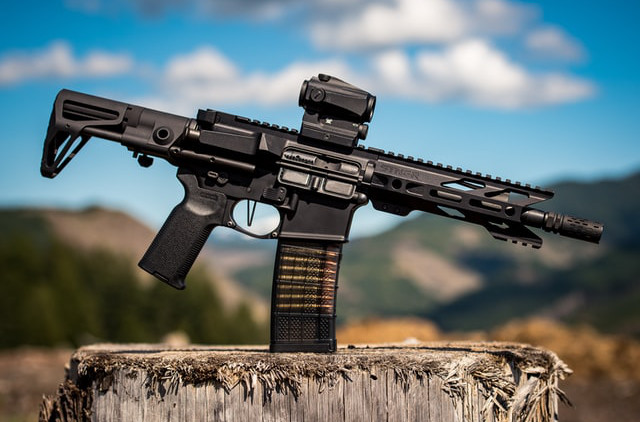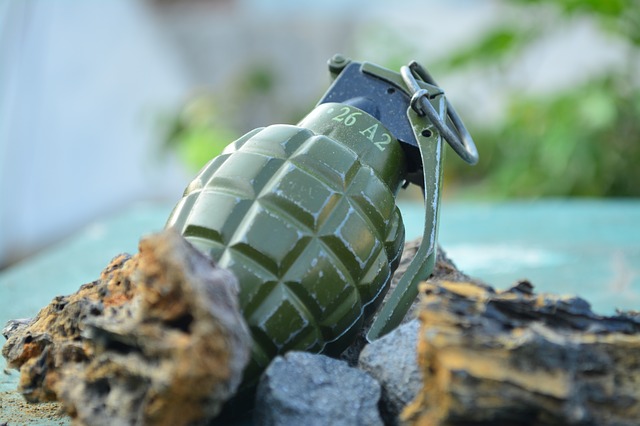By Marvin Marroquin • Updated: 01/17/2023 • 7 min read
There are those who believe gun rights advocates want to exercise their right to own everything from hands gun to nuclear weapons. This begs the question, does the Second Amendment apply to all weapons?
The intent of the founders was to guarantee individuals the right to protect themselves. Any weapon that serves that purpose is justified, unless that weapon will adversely affect the innocent life of others, such as the use of nuclear weapons.
With many interpretations of the Second Amendment, and the plethora of weapon options in existence, it’s difficult to pinpoint exactly how to apply it to individual ownership. Fortunately, the founders left us a guide to help us determine what weapons are appropriate for individual ownership.
What weapons did the founders have?
To understand their intent, let’s take a look at the kinds of weapons our founders had available to them. Remember, the U.S. didn’t officially have a standing military until years after the Revolutionary War. Wars were mostly fought by state militia groups that were comprised of individual citizens. Likewise, the weapons used in these wars were privately owned. So what kind of weapons did they have? You’d be surprised to learn how advanced they actually were.
The most common type of weapon during that era were handheld weapons that could be used during peacetime for self protection and hunting. Everyone is familiar with the muzzle loading, flintlock style muskets and pistols. However, most people don’t realize that the colonists also owned and carried other weapons such as knives, bayonets, swords, tomahawks, and axes. The tomahawk was especially common due to its multipurpose use for breaching doors, breaking glass, close quarter hand-to-hand combat, and hunting.
Let’s move on to weapons that were a bit more devastatingly effective. Weapons such as the Puckle gun, the Ferguson rifle, and the Girandoni air rifle were the “assault weapons” of their day. These kinds of rapid fire weapons were even available as early as 1597! They were able to fire up to 4 times faster than a standard muzzle loading rifle. For example, the Puckle gun fired 63 rounds in 7 minutes, while the Girandoni air rifle had a detachable magazine with 19 rounds.

At this point you may be asking yourself, “Surely, they didn’t own military grade, mass casualty weapons like explosives and tanks.” Well hold on there skippy, these guys were hardcore and wanted to make sure they had the upper hand in every battle. I’m talking hand grenades, cannons, underwater mines, and even a submarine! So when gun control advocates say that our Founding Fathers could not have imagined the rapid fire and destructive weapons of today, it’s based on ignorance to the facts of historical evidence.
What are personal defensive weapons?
When we think of personal defense weapons there are a few assumptions we naturally make. First, the weapon must be readily available to use in a defensive scenario. Whether you’re at home or out getting a cup of coffee, a personal defense weapon should have the ability to be carried in a reasonable manner, or at least within reach. If you’re at home, a shotgun or rifle can be within reach from a bedroom or gun safe. On the other hand, carrying around a rifle may be cumbersome in a coffee shop setting.
Another assumption we make is that a personal defense weapon should only be used to eliminate or neutralize a threat. For example, if an active shooter shows up at the mall, you don’t want to hurl a grenade when there’s a crowd of innocent people nearby. This defeats the purpose of defense and crosses the line into murder. We want to make sure we are targeting the specific threat. Something that can be used accurately is the ideal weapon for personal defense.

With these assumptions in mind, what makes a great personal defense weapon? Knives, pistols, rifles, and shotguns can be easily carried given the appropriate settings. The colonists carried their rifles to many public places. Today, there are great accessories, such as slings, that would allow you to carry long arms safely. Ideally, the perfect carry weapon would be a knife or pistol as they are easily compact and concealable. There are also so many holsters available for every type of pistol.
What weapons are necessary for the security of a free state?
I’ll admit, this section is going to be very controversial. We need to understand what the “security of a free state” means. A “free state” is synonymous with “free country,” or “free society,” according to 18th century usage. So this begs the question, who is the threat to a free society? It would take a very powerful concerted effort to try and subdue a free people. So let’s take a look at 2 examples of threats.
First, it’s become more apparent recently that individuals can radicalize an ideology and assemble into mobs of people that can disrupt our way of life. From rioting and looting to overtaking several city blocks and establishing a “sovereign” government, small groups or people can be a serious threat. What makes matters worse, local authorities may have their hands tied and unable to provide security. In this instance, the security of a free state falls on individuals that can assemble into militias.
Second, which is also becoming apparent recently, those at any level of government may overstep their powers and try to infringe on the rights of individuals. From unlawfully seizing private property to the Patriot Act, government can be a serious threat to the constitutional liberties we enjoy. Fighting off a tyrannical government is no easy task, but the Second Amendment serves as a check on tyranny.

This is the purpose for the militia clause. Individuals have the right to own weapons powerful enough to fight off a government, otherwise, there is no realistic check on tyranny. Assault weapons, explosives, and military grade vehicles are all weapons militias need to fight tyranny. Again, I don’t believe this would include nuclear weapons, but localized explosives like grenades and IEDs would not be out of the question. Once the Rule of Law goes out the window, it’s up to a collective of individuals, or militias, to restore it. The goal is not to cause unnecessary destruction, but to directly eliminate the threat and restore law and order.
Which weapons should individuals own?
Taking into consideration everything discussed, it’s clear that the purpose of the individual right to keep and bear arms has 2 distinct purposes: first, to protect against individuals and/or groups, and second, to protect against tyranny. Each scenario requires a different approach as it relates to weaponry. Individuals should own weapons that would adequately prepare them for every scenario. These weapons actually serve a real world purpose.
Weapons that are light, mobile, and concealable are preferred against your average day to day threat. These are the knives and pistols that are in common use today. Remember, simply carrying these weapons doesn’t make you Jason Bourne. Training is just as important. Rifles and shotguns are not just great for home defense, they’re very useful against a threat of individuals or groups. Mobs of people looking to wreak havoc in communities require accurate and powerful weapons with a higher capacity of ammunition. These are just the reality of our times.
No one wants to see tyranny hit our country, but everyone should be prepared for it. An armed society serves as a deterrent to those who want to usurp their delegated powers. To do so requires powerful weapons such as assault weapons, explosives, and vehicles. Each category serves a specific purpose, never to be used against innocent lives, but to restore law and order.
